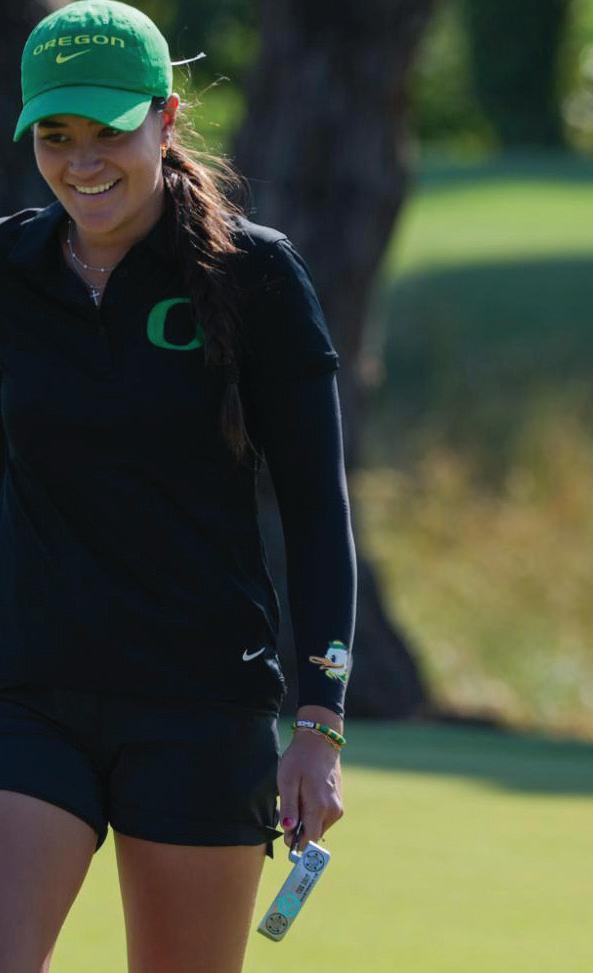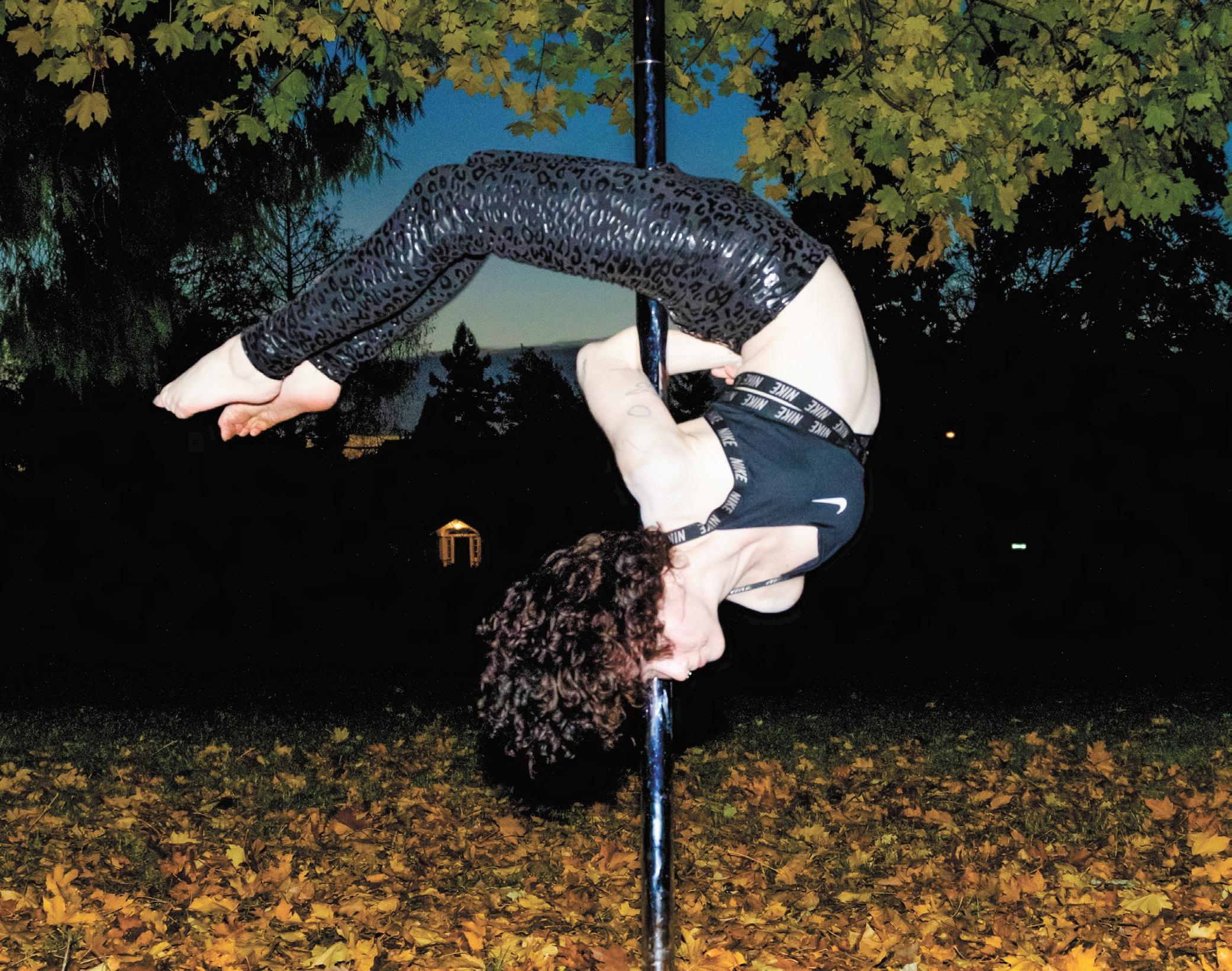




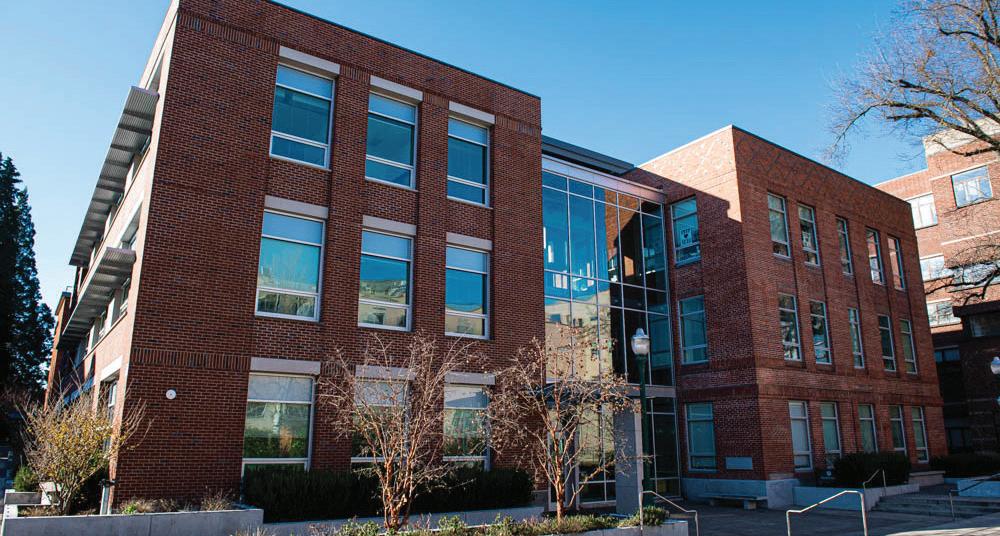
The Daily Emerald sat down with SOJC Professor Lori Shontz to discuss the future of student media.
Continue story on page 4
OPINION
Brewer Knight: The new course registration portal causes more problems than it solves
By Maddox Brewer Knight: Opinion Columnist
We all hate registration week.
Whether you’re scrambling to meet graduation requirements, struggling to wedge a third lab block into your schedule or languishing at number 24 on a waitlist, course registration is a perennial source of stress.
Unfortunately, we might have taken its efficiency for granted. In past terms, no matter how awkward your time slot, you were at least guaranteed a straightforward process.
This term, however, students opened their DuckWeb to find that the system had been drastically renovated.
The trusty “schedule builder” function had been replaced with five new features. Instead of a self-explanatory user matrix, students were met with a number of instructional videos.
In what appears to be the most unpopular change, the “schedule preview” function has been gutted, replaced by an updated portal that restricts students to either using pre-built degree
Continue

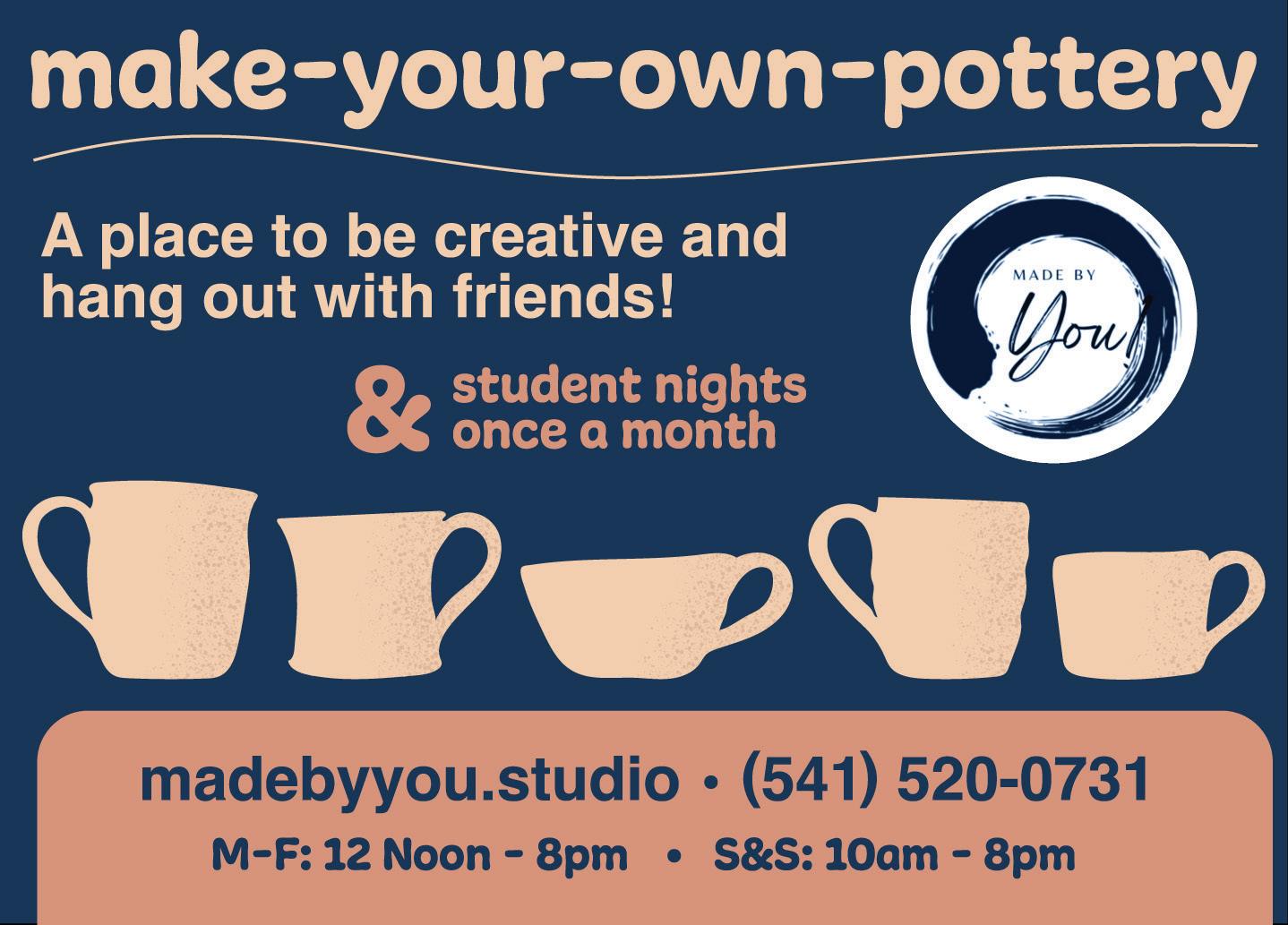
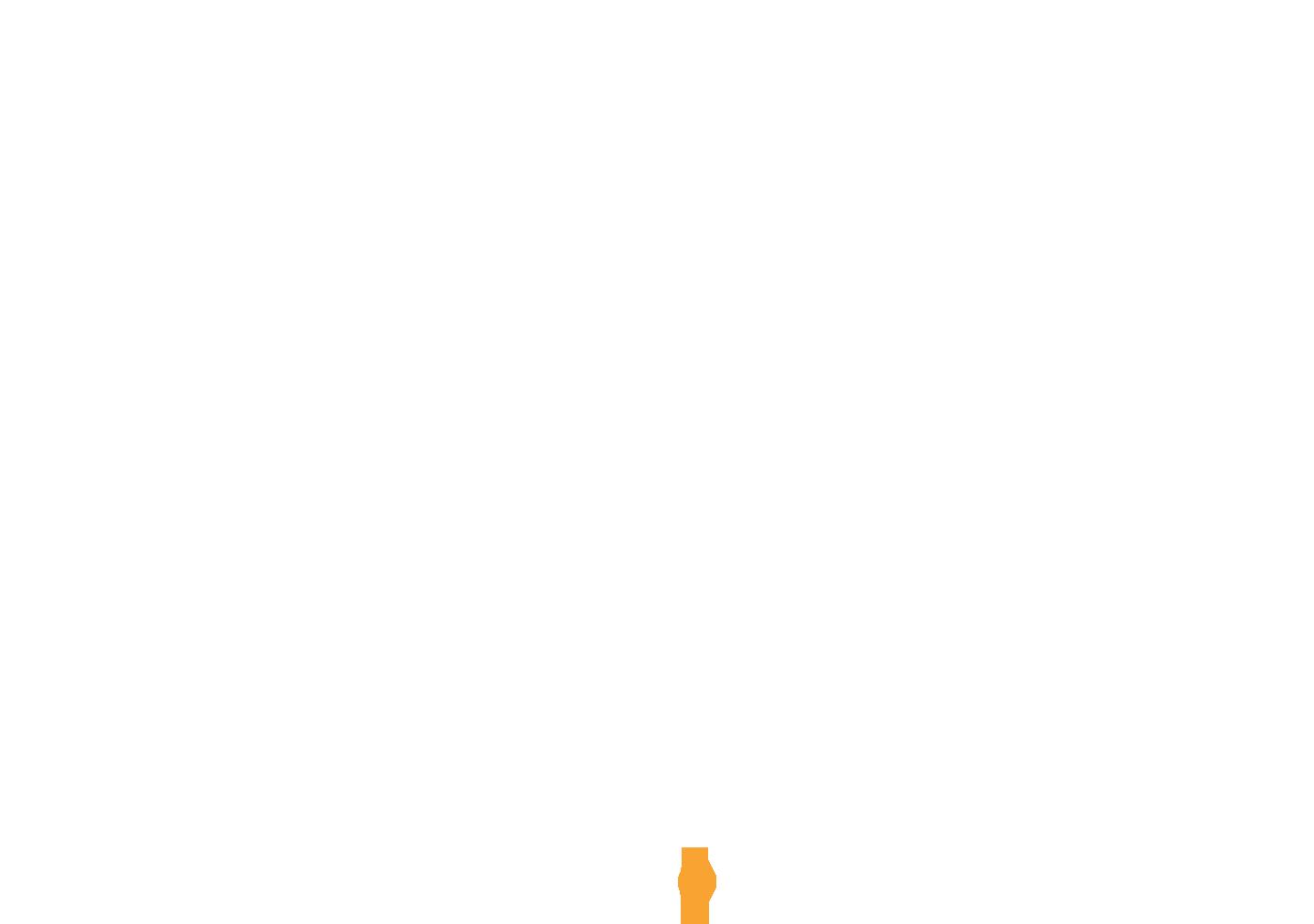

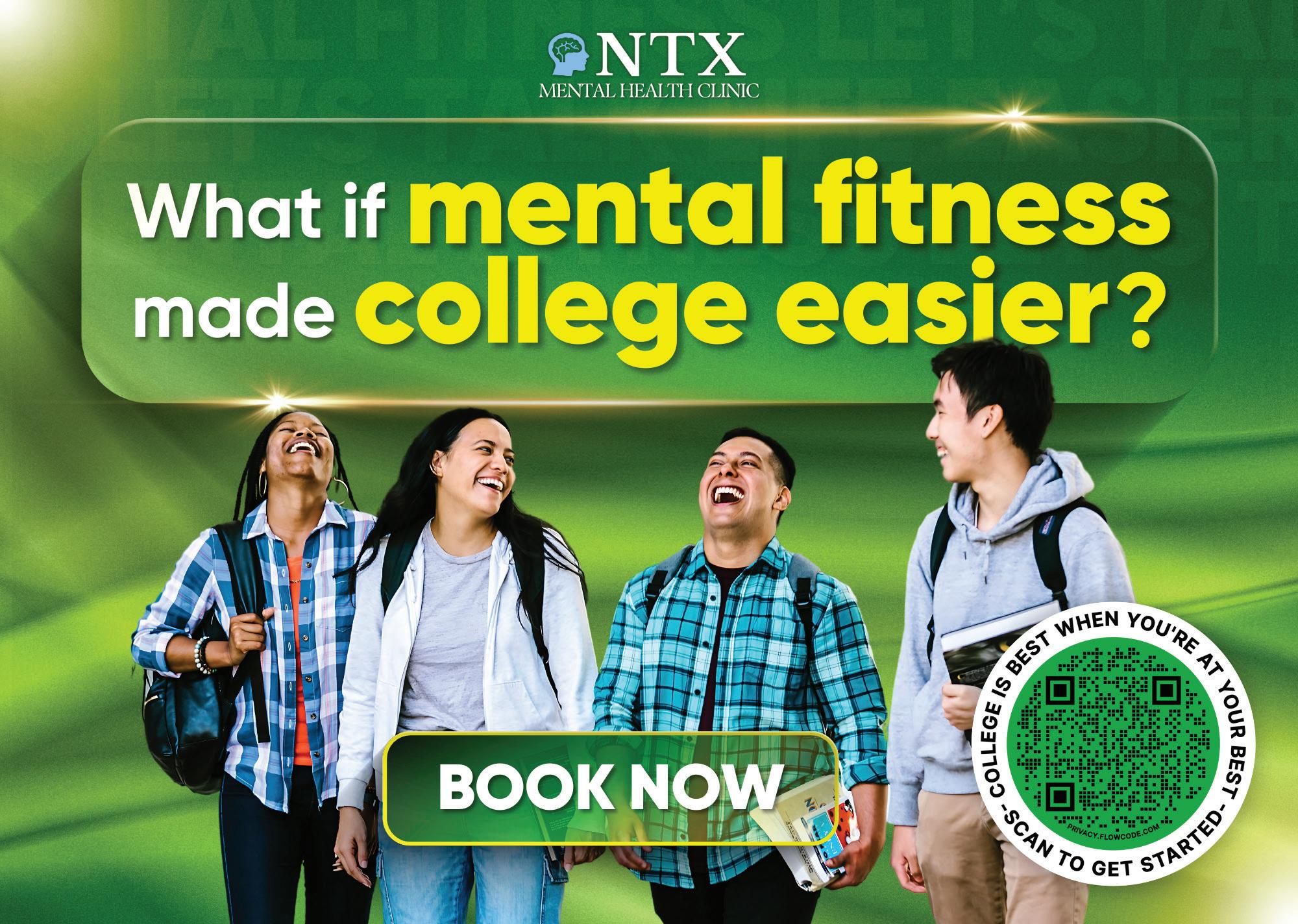
EDITOR IN CHIEF
Tarek Anthony
PRINT MANAGING EDITOR
Ryan Ehrhart
DIGITAL MANAGING EDITOR
Ysabella Sosa
NEWS EDITOR
Reilly Norgren
INVESTIGATIONS EDITOR
Ana Narayan
A&C EDITOR
Claire Coit
SPORTS EDITOR
Jack Lazarus
OPINION EDITOR
Gracie Cox
PHOTO EDITOR
Saj Sundaram
COPY CHIEF
Olivia Ellerbruch
VIDEO EDITOR
Jake Nolan
PODCAST EDITOR
Stephanie Hensley
SOCIALS EDITOR
Ysabella Sosa
VISUALS EDITOR
Noa Schwartz
DESIGN EDITOR
Adaleah Carman
DESIGNERS
Ellery Burton-Tillson
Eva Andrews
Nina Rose
PUBLISHER AND PRESIDENT
Eric Henry (X317) ehenry@dailyemerald.com
VP OPERATIONS
Kathy Carbone (X302) kcarbone@dailyemerald.com
DIRECTOR OF SALES & DIGITAL MARKETING
Shelly Rondestvedt (X303) srondestvedt@dailyemerald. com
CREATIVE & TECHNICAL
DIRECTOR
Anna Smith (X327) creative@dailyemerald.com
ACCOUNT EXECUTIVES
Torin Chevalier
Camcole Pereira
Ava Stephanian
Elliot Byrne
THE DAILY EMERALD
The Daily Emerald is published by Emerald Media Group, Inc., the independent nonprofit media company at the University of Oregon. Formerly the Oregon Daily Emerald, the news organization was founded in 1900.
Emerald Media Group
1395 University St.,#302 Eugene, Or 97403 (541)-346-5511
Three University of Oregon business students publish multipurpose marketplace site to help students find housing, events and roommates.
By Angelina Handris News Reporter
This fall, three University of Oregon business students have created UniYard, a site that allows students to buy and sell unwanted items, as well as find roommates, community events and housing.
It took about three weeks of researching how AI can help build (a website) for you without you having to know how to code
Cedric Roberge Co-founder of Uni-yard
Co-founder and UO business marketing student Cedric Roberge said the site’s name is a combination of “university” and “yard sale.”
He said the idea stemmed from an assignment in an entrepreneurship class where he learned that students commonly struggled with finding housing and roommates.
“Students kept saying they wish there was something where you could easily sub-
lease your apartment, get someone to take it over for summer… and also finding roommates,” Roberge said.
The marketplace aspect of the site was intended to as a way for students to sell unwanted goods and make extra money.
Arlo Snodgrass, a business finance student and UniYard co-founder, said seeing a friend struggle with storing her belongings during the summer only to end up throwing them away was part of the inspiration behind the site’s marketplace.
“If she would’ve been able to make some money, just being able to post (the items) when she was leaving, it would have helped her a lot,” Snodgrass said.
Roberge said there are plans to promote the project on other college campuses across the country, including pop-up events and speaking in classes.
“Our goal is next week to get up to Oregon State, and then go to Washington and kind of repeat our process over and over to reach other universities,” Roberge said.
He siad there are already a couple hundred UO students currently using the site.
Roberge said he primarily used artificial intelligence to help him build the site, although the process was challenging.
“It took about three weeks of researching how AI can help build (a website) for you without you having to know how to code,” Roberge said.
Snodgrass said another challenge was making sure the website was secure and that
Some fraternities involved in recent tampering reports still under investigation by student conduct.

users could not post inappropriate content or have their personal information stolen.
Snodgrass and Roberge also said a shortterm goal is creating a UniYard mobile app. Roberge said owning a business has always been his goal, but he has shifted his focus toward helping others as well.
“If I’m helping other people, but also doing something for me, then it’s going to work better. The more users we’re gonna have, the more successful we can be,” Roberge said.

By Reilly Norgren News Editor
The University of Oregon Police Department has sent out four crime warning reports of consumables tampering within a month.
On Oct. 6, UO sent out a warning regarding a student ingesting an unknown substance after using a vape offered to them at a fraternity party. The incident occurred on Sept. 27 and was reported to the university on Oct. 5.
On Nov. 4, a warning was sent out regarding two additional incidents including drink tampering at a registered fraternity event and tampering with a cannabis edible.
While the crime alert emails did not include the locations of these incidents or specify fraternity names, the Office of Equal Opportunity of Access’s drugging allegations page provides the locations of recent reports and the names of the relevant organizations.
The incident occurring on Sept. 27, which identified several possible fraternities where the incident could have happened, is currently labeled as having insufficient information to initiate a formal investigation under its status.
The two additional incidents cited in the second crime warning email, occurring on Oct. 25 and Nov. 1, are currently being reviewed by the conduct office. The incidents reportedly occurred at a UO housing building and a Sigma Chi LiveOut, respectively.
An additional alleged drink tampering incident not relayed in an email, according to the page, occurred on Oct. 31 at a Pi Kappa Phi Live-Out. It is currently being reviewed by the conduct office.
Pi Kappa Phi is currently on disciplinary probation until 2027 due to an unregistered social event, according to the Greek Conduct Process website. Sigma Chi is not listed as being on any kind of probation. Currently, UO uses safety measures like Flare to provide secure tickets at events and Real Response for anonymous reports and concerns at FSL events, in addition to the ability to make an official report with the university.
UO’s office of Fraternity and Sorority Life did not respond to a request for comment.
August 6: The Stanford Daily files a lawsuit against United State Marco Rubio
Suit claims that the government used two federal laws under the Immigration and Nationality Act to target international students for their participation in student journalism
This allegedly resulted in students withdrawing bylines or stopping writing all together out of fear of visa revocations or deportation
55 student publications from around the country have joined a national amicus brief in support of The Stanford Daily in addition to The Daily Emerald
The brief is led by the Student Press Law Center and the Foundation for Individual Rights and Expression (FIRE)
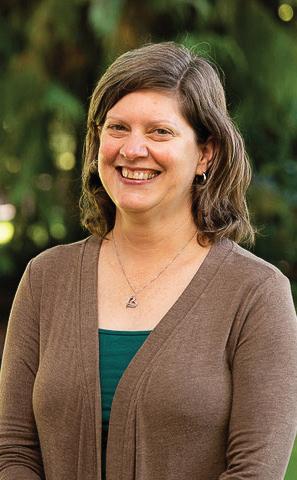
(Courtesy of Lori Shontz)
By Corey Hoffman Senior News Reporter
Across the country, college media is facing censorship, funding cuts and university pushback. In September 2024, Pennsylvania State University removed the newsstands of its college newspaper, The Daily Collegian. In June, Purdue University announced it was distancing itself from its student newspaper, The Purdue Exponent, by not allowing them into buildings to fill newsstands. On Oct. 15, Indiana University cut the print editions of its student newspaper, The Indiana Daily Student, and fired the director of student media.
With the recent attacks on student media, The Daily Emerald sat down with University of Oregon School of Journalism and Communication
Professor Lori Shontz and Marie McMullan, student press legal associate for campus advocacy from the Foundation for Individual Rights and Expression to discuss the rising threats to student media and the future of student journalism on college campuses.
One thing journalism as an industry needs more of overall is solidarity among journalists from different publications, and I think student media is leading the way on that in a way that professionals could learn from.
Lori Shontz SOJC Professor “ “
What role does student media play on a university campus?
Student media is so important to every college campus. Universities need to be held accountable just like every other major institution in our country and student media is best positioned to do that because they understand the campus, they understand what is happening, they have access to sources beyond officials, beyond public relations professionals and it is vitally important. It is also vitally important for people to see themselves in the news media that they consume and student media is particularly well positioned to reflect student life back to students in a way that professional media, community media from outside the university, is able to do less well.
What was your initial reaction to the situation at the Indiana Daily Student?
I was appalled. The law is clear: there should be no interference from the university at an independent student publication. It’s appalling, the fact that someone who is in charge of a media school would think it is a good idea to tell the news advisor ‘yeah, we’re not going to print this in there.’ It’s very important too that (Director) Jim Rodenbush did the right thing, and I know Jim, he worked at Penn State when I was there, he knows the law, he knows the responsibilities and he said right away, from the news coverage I’ve read, that this is a First Amendment issue. He said it immediately, clearly, right away. The fact that the administration at Indiana University didn’t seem to understand or care about that is horrible. Independent media is independent media and it is necessary. There is a movement to stifle student media and it is clear. There are multiple examples, because research shows that fewer people are consuming print student media, and it is hard to raise money to do this. There are two pressures happening at once – you need to fund journalism, and it’s expensive. Journalism matters and it’s expensive, so figuring out how to pay for that is difficult. Being independent helps with that but it’s also very difficult because it takes a lot of money. You can’t just rely on donations; that doesn’t seem to be working. I get sad every single time an administration moves to censor student media.
This goes back (to) when I was in college; I was the sports administration reporter for The Daily Collegian and I had to write a story because a red pick up truck with blue university license plates took our football gameday issues from the stadium, and I had to write a story about it and call them for comment, you know, ‘why were university trucks removing our gameday magazines, what was happening here?’ There’s nothing new to this, there’s just more of it now. Having people stand up to it, having alumni stand up to it and having other student media stand up for it. Something I’ve been hugely impressed by is the way that student media is working to have each other’s backs. That has been really heartening. One thing journalism as an industry needs more of overall is solidarity among journalists from different publications, and I think student media is leading the way on that in a way that professionals could learn from.
What was reaction to response from student media organizations across the country and Stanford University’s Amicus Brief?
The amicus brief is important, and the Student Press Law Center does incredible work. They are one of the most valuable organizations out there, they have the expertise, they have the connec-
tions and they have the ability to put coalitions together. The number of publications who’ve signed on to the amicus brief shows that journalism matters and that journalists are going to stick up for one another.
I feel like equally important are these (smaller) moments. The Purdue Exponent prints the Indiana Daily Student and helps with the costs, and those schools are rivals. Equally important is The Emerald writing an editorial in support and Louisville combining with other student news organizations in the area to write editorials. I think the message of solidarity is important and I think that can happen at the big levels like an amicus brief and at day-to-day levels like that and I am so heartened to see it.
Where are these attacks coming from?
Trust in journalism has been falling for decades and that is the result of a long time campaign to foster distrust in journalism. Journalism makes people uncomfortable and that’s part of its job. It doesn’t have to be every story, it shouldn’t be every story, it shouldn’t be every single piece but part of what journalism does is hold power to account.
You can look at history for a long time and power wants to get around that, so we are in a stage where trust in news media is very low and that makes it easier, in some ways, for this to happen right now. I think it’s particularly dangerous because we are at a moment right now where we need good journalism as much or more than we have ever needed it.
What do you see moving forward?
I’m hopeful that this sense of solidarity among student news organizations will grow. I’m hopeful that it will include professional publications as well. I think the industry needs to band together.
I feel like the public doesn’t know what journalism does. We haven’t explained particularly well to the public why we matter and I read a lot of stories about trust continuing to drop, so I put those stories in my classes, we read the research and we go through that. I think the best thing that I can do is be a guide for students going forward. It’s a tricky spot; journalism needs to change in some ways and stick to the values that have made it important for so long. Being able to navigate a very difficult moment in history requires a lot of flexibility of thought and a very strong ethical commitment, which I work very hard to infuse into all of the classes and it requires a little sense of history, as well as the moment where we are now and how we got there.
I’m working on a book about journalism education with some colleagues across the country and we’re talking a lot about how solidarity matters and how reliance matters, for all journalists, but especially for student media. Fostering a sense of resilience in student media is hugely important right now because it is difficult work. It is highly rewarding work and it is difficult, but trying to prepare students for both sides of that is part of my job.
Student Press Legal Associate for Campus
Advocacy
Student journalists are journalists — full stop. In many regions, they are some of the only sources of news in a community. And on college campuses specifically, they are the ones closest to the ground when it comes to issues affecting students. They are best situated to be watchdogs at a university.
What are the biggest threats to student media and student journalists right now and where are these threats coming from?
Censorship — both in direct and indirect forms — continues to be a significant threat to student journalism. I continue to see students blocked from being able to speak with university sources and colleges using a paper’s content to justify attempts to defund the publication.
What is FIRE doing to help prepare and defend student media organizations?
Even though we've seen continued attacks on student media, I think the future of student journalism is on a trajectory to cement these student publications as fearless watchdogs on university and college campuses. Student journalists continue to show they are not willing to be silenced when faced with administrative censorship efforts. Q
FIRE is addressing issues affecting student newspapers on various fronts. First, we provide a rapid response to student journalists facing censorship or media law questions with our 24/7 legal hotline. We also try to inform student journalists about the various ways prior reviews and restraints can occur with resources like canipublishthis.com and our regional workshops. And when a matter comes to us, we tailor our efforts to best suit that student journalist or publication — whether it comes in the form of advocacy letters, connecting them with attorneys in FIRE’s Legal Network, or going on campus to rally student support.















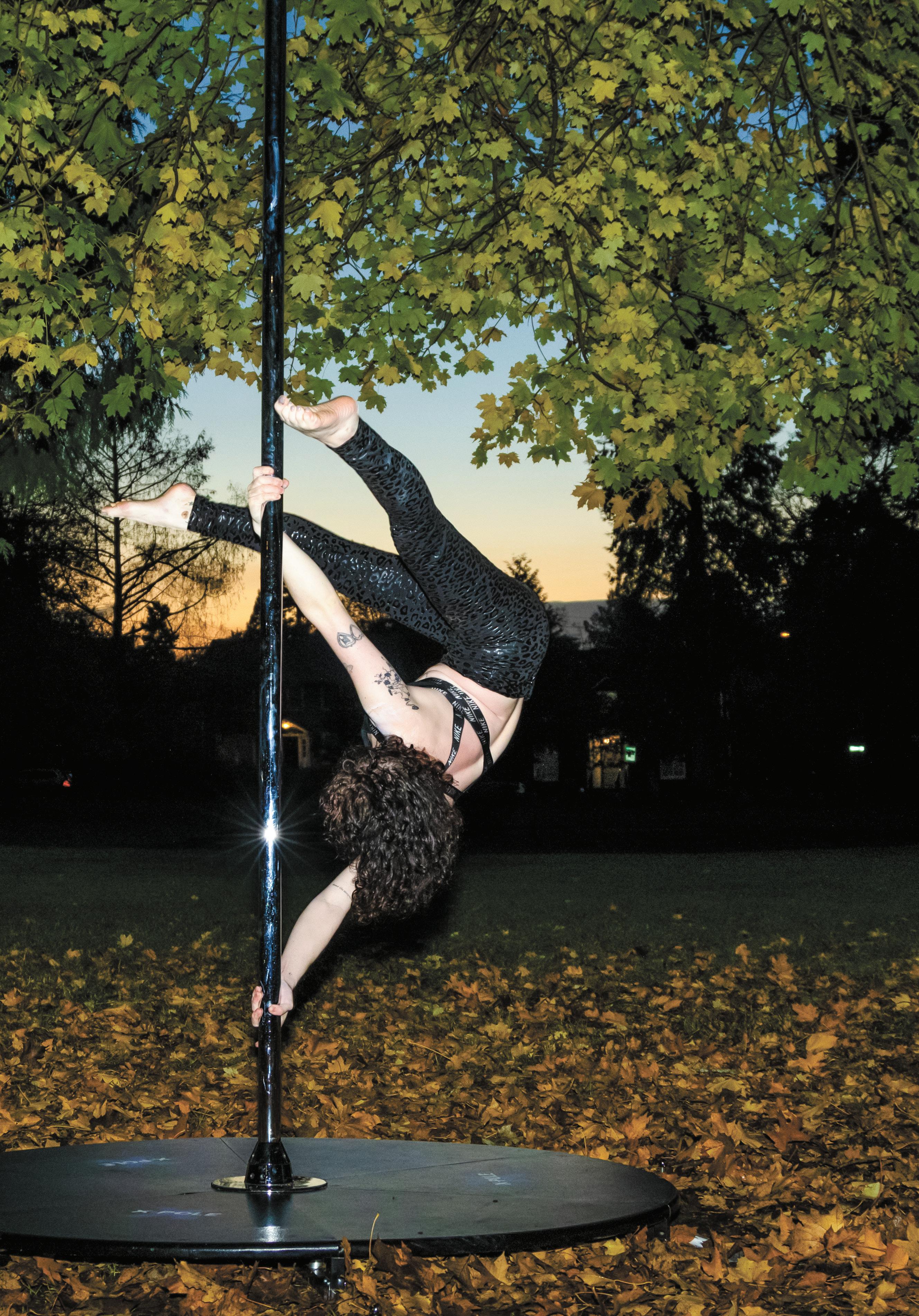
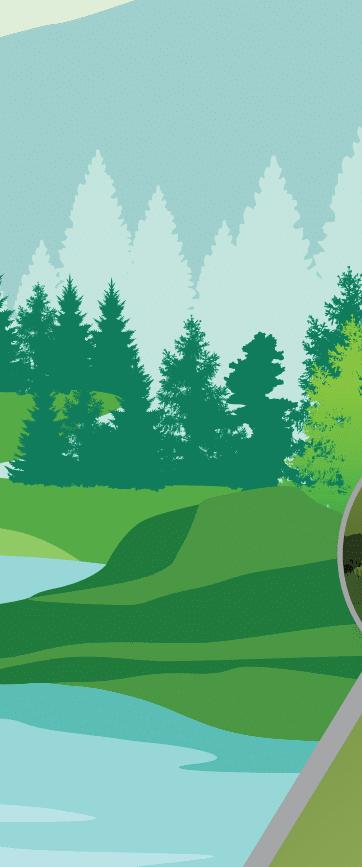

Ethos is a nationally recognized, award-winning independent student publication. Our mission is to elevate the voices of marginalized people who are underrepresented in the media landscape and to write in-depth, humanfocused stories about the issues affecting them. We also strive to support our diverse student staff and to help them find future success.
Ethos is part of Emerald Media Group, a nonprofit organization that’s fully independent of the University of Oregon. Students maintain complete editorial control over Ethos and work tirelessly to produce the magazine.
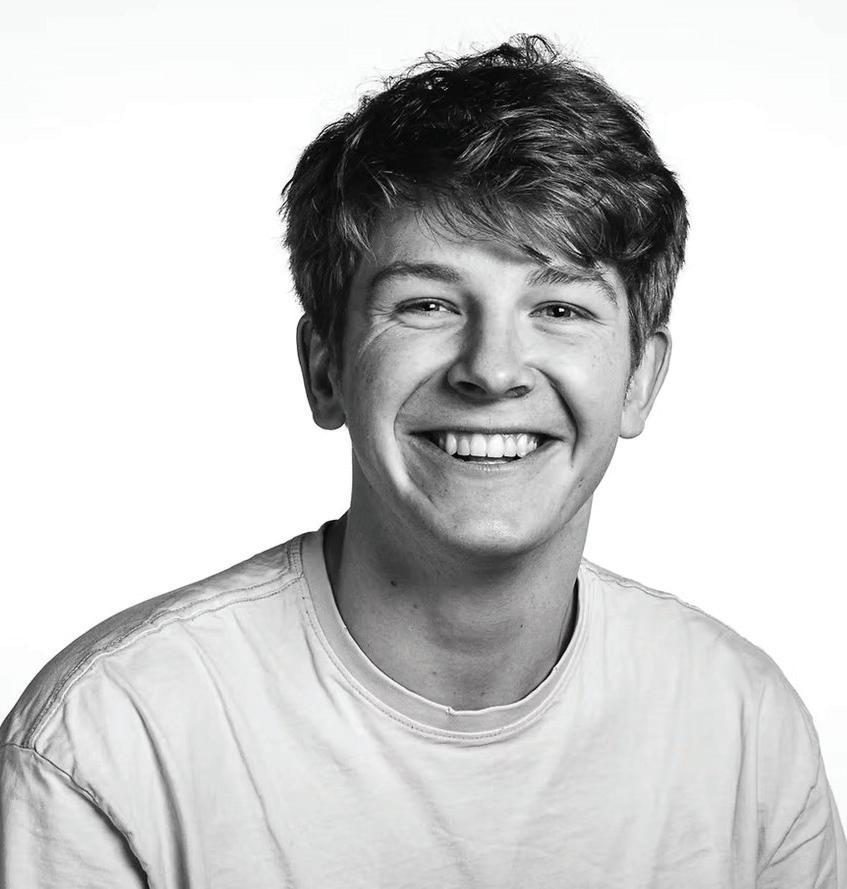
Mname is James Lejeune, I am a fourth-year journalism student at the SOJC.
I am the new Ethos Desk editor under The Daily Emerald. Over this past year, I fell in love with feature writing. The process is trying and imperfect, but the end result is always pride. Pride in your work, pride in the story you told and pride in the voices you elevated.
As Ethos enters its 20th year at the University of Oregon, it also begins its latest chapter. It was originally founded as Korean Ducks Magazine to cover the Korean community in Eugene. The change from KD to Ethos in 2009 was meant to exemplify that this publication is for all students. Its
independence from the SOJC in the early years allowed all students to write, no matter their major. The remodeling of the EMU in 2016 kicked Ethos out of their small studio space. The Daily Emerald offered them a place to work during the renovations. That led to Ethos merging with the Emerald Media Group. For 10 years Ethos operated under EMG, with once-aterm print editions covering everything from climate change to community drag shows.
That brings us to now. Ethos magazine has a new look once again. We will now write under The Daily Emerald as its newest desk. A true feature desk with monthly print editions that will strive to honor the multicultural and inclusive legacy of Ethos.
Feature writing allows us the privilege of time. Time to really get to know our subjects, time to dive deep into the topic and time to get the full story. It’s a privilege to lead a team of reporters through this exciting transition.
Moving forward, we will always be looking for freelance stories from students willing to tell them. We want to be an opportunity for students to showcase their voices and to use their voices to tell others stories.
We have some returning writers and a few new ones. The transition from a separate, printed magazine to a new desk will take time, but we are confident that this new Ethos will be something the community can and will be proud of. We look forward to telling your stories, and we hope you see yourself in Ethos.
Sincerely,
James Lejeune Ethos Editor
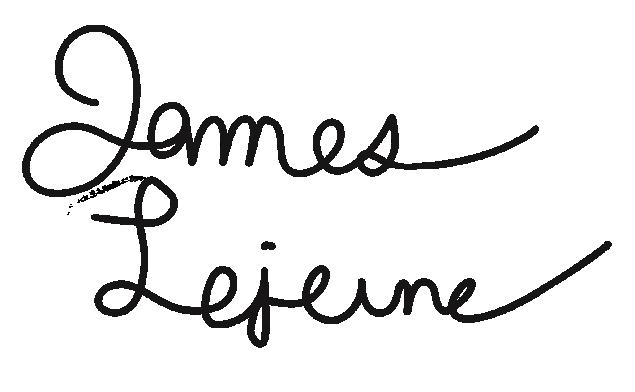



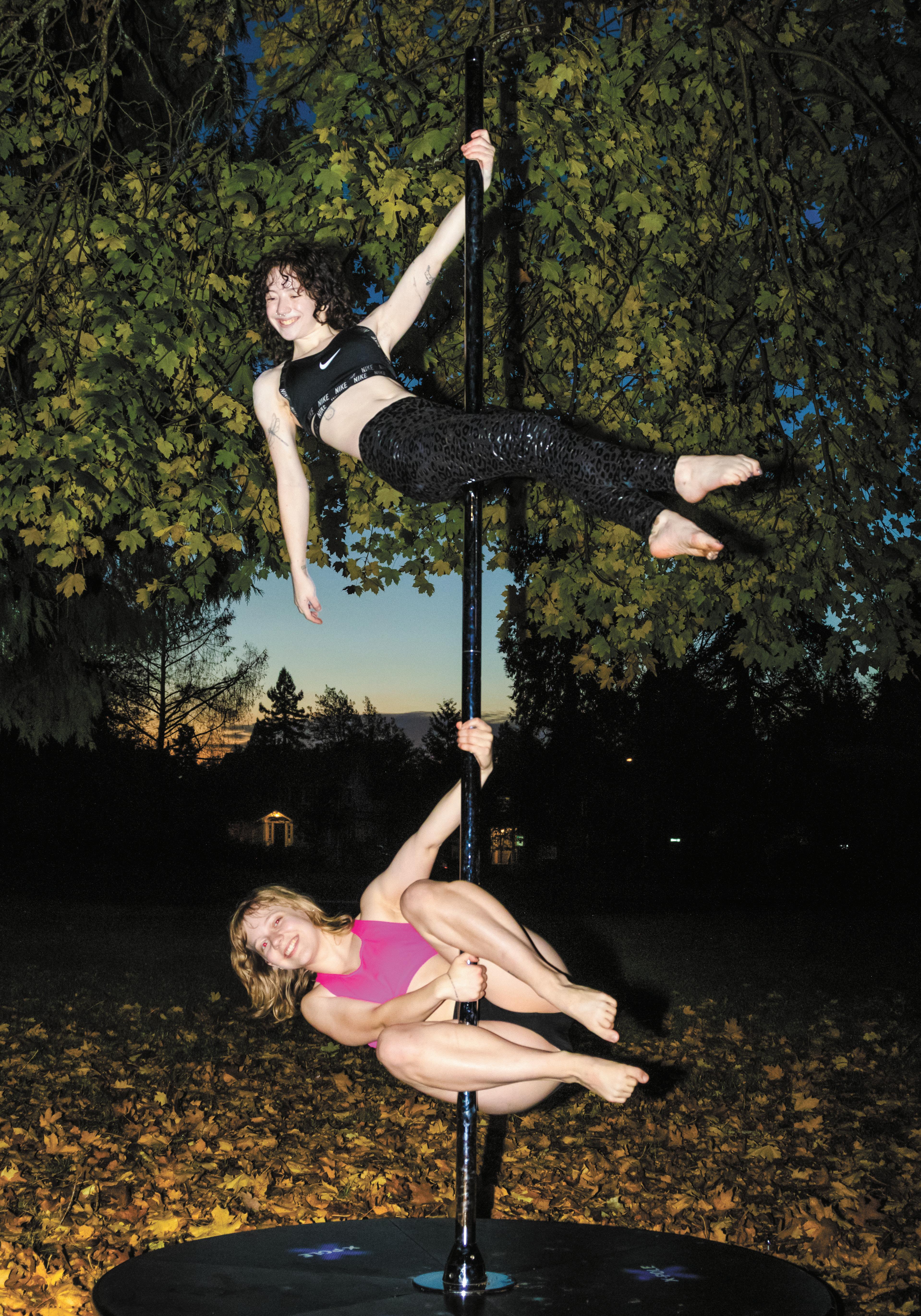
pole
By Ana Haapala | Ethos Writer
Getting off the ground is one of the most difficult things to do. Whether it includes delving into a new hobby, learning an unfamiliar skill or simply starting an essay, beginnings are formidable. Motivation is what stimulates action; it encourages us to finally take that leap.
Pole dancing – referred to simply as “pole” by those who practice it – is often identified in relation to stripping and erotic performances. Notwithstanding, the twentyfirst century has seen a massive expansion in pole applications. According to the International Pole & Aerial Sports Federation, the turn of the century marked a
P ole dancing is for everybody – doesn’t matter your gender, your body type, anything
Cassia Williams Co-founder of Student Pole Collective
University of Oregon juniors
Cassia Williams and Dori Vaughan share this necessary motivation. They are co-founders of Student Pole Collective, a space created to teach students pole dancing basics. The collective is aimed at fostering community and a safe environment for students to build confidence in their bodies, and challenge stigma surrounding the sport. Williams and Vaughan have high hopes for this collective, but they’ve struggled to get it off the ground.
shift in the popularity of pole fitness and competitions. In 2006 pole dancing became associated with the sports world, and in 2009 the IPASF was born.
Today, pole is used for exercise, artistic expression and competition. Williams is a


member of the U.S. Pole Sports Federation and is training to compete in national qualifiers for the U.S. Aerial Federation.
Williams started doing pole both competitively and recreationally in high school, as a substitute for their previous athletic activities, like soccer.
“Once I was in high school, I realized that I was trans nonbinary,” Williams said. After this realization, they felt many of their sports teams weren’t the right “fit” anymore, because “sports in general are so inherently gendered.” Pole, which is more gender inclusive, became a better space for Williams to challenge themself athletically.
they’re all in the same family,” Williams said.
Both Vaughan and William’s personal connections with pole relate to its strength in encouraging expression and empowerment.
“When you picture someone pole dancing, you picture somebody attractive, someone seductive, someone very in control and confident,” Vaughan said.
In Vaughan’s opinion, this image often inspires people with a desire to feel more self-assured and poised to start pole. Williams strongly believes that this courage in expression is available to all.
We are not here to promote sex work, we are not here to teach people how to be strippers,but we are also not here to say that stripping is bad or that sex work is bad
Cassia Williams
Co-founder
of Student Pole Collective
Unlike Williams, Vaughan’s journey to Student Pole Collective did not begin with pole, but rather aerial silks and lyra – also called aerial hoop. Vaughan was originally drawn to aerial sports because they gave her a new mechanism to explore dance and movement.
“For me, dance has always been something inaccessible because of some combination of poor hand-eye coordination or body awareness,” Vaughan said.
With something tangible to hold onto, she found she could participate in dance and perform physically in ways she previously thought were unavailable to her.
Already proficient in aerial sports, pole was both a new challenge –because it involves more movement on the ground – and a natural progression of aerial athleticism.
“Hoop and silks are siblings, and pole’s like a cousin almost, but
“Pole dancing is for everybody –doesn’t matter your gender, your body type, anything,” Willliams said.
Williams and Vaughan both attest to the beginner-friendly nature of pole, especially in comparison to lyra or aerial silks. Oftentimes, the two find that people are surprised at what they can accomplish as a beginner. In her work as an instructor at an aerial sports studio, Vaughan has seen this first-hand.
“I think it’s exciting to show people what their bodies can do,” she said.
Student Pole Collective hopes to make pole even more accessible by helping people begin their pole dancing journey, a first step that can feel daunting. “Getting off the ground is the hardest part,” Williams said.
Upon hearing that Williams participates in pole dancing, they note that many people respond


with “I’ve always wanted to try that.” In fact, since Student Pole Collective was announced on Instagram in June, there has been a massive amount of community engagement from UO.
However, even with this interest, the two still must navigate the stigmas that surround pole, much of which comes from its aforementioned association with stripping and sex work.
“We are not here to promote sex work, we are not here to teach people how to be strippers, Williams said. “But we are also not here to say that stripping is bad or that sex work is bad.”
Vaughan emphasizes that the two are prepared to discuss this perception with those who are interested in their collective.
Echoes of pole’s stigmatization have already surfaced in the campus climate since Student Pole Collective’s creation. In July, Student Pole Collective posted a flyer promoting their first event: a “Pole in the Park” gathering at Alton Baker Park. This flyer was later reposted by a popular, unaffiliated, student-run commentary Instagram account – with the caption “Excuse me? [embarrassed emoji]. ”
The post wasn’t explicitly mean, but Williams and Vaughan felt that it came from a place of misunderstanding about their collective and pole in general. Fortunately for the collective, this post only served to generate more excitement about the new potential club.
As the response to the post illustrates, many people, especially women and queer individuals, have found they can harness pole’s stigmas in ways that contribute to pole dancing’s unique ability to foster bodily liberation.
“As a woman, it’s very easy to feel shameful about things that remind people of sex, even if there is nothing actually connected or of substance within that,” Vaughan said. “To take something that people very much associate with sex and do it in a way that is not about sex, but is about you, is empowering.”
Unfortunately, on Oct. 30, Student Pole Collective announced on their Instagram that they could not move forward with this collective on campus.
Vaughan explained that many clubs only require a space and people who want to join, but said that bringing in a physical activity makes it a lot more complicated. Due to these constraints, Williams and Vaughan purchased a second-hand portable stage pole for their developing club. While stage poles are much more expensive than the classic tension poles, Williams and Vaughan knew that only a stage pole would allow them to bring this collective on campus. They were willing to make that investment.
According to Williams, the primary reason that Student Pole Collective is no longer a possibility on campus is because of liability concerns from the university. In a risk assessment meeting with the Center for Student Involvement, the two were told they would be completely liable for any injuries club members might sustain while participating. They would also need to purchase insurance and hire a lawyer. These expenses would be on top of the fees to rent a specialized location in the Student Recreation Center.
After careful consideration, Williams and Vaughan decided that there were too many obstacles to continue the collective on campus.
Going forward, they hope to create an accessible and empowering offcampus student community for those interested in pole, perhaps with more “Pole in the Park” events starting in the spring. Williams and Vaughan are still optimistic that pole dance will one day be brought to the university’s campus, they just may not be the ones to do it.
Perhaps, Vaughn said, “It’s something someone could get off the ground someday.”






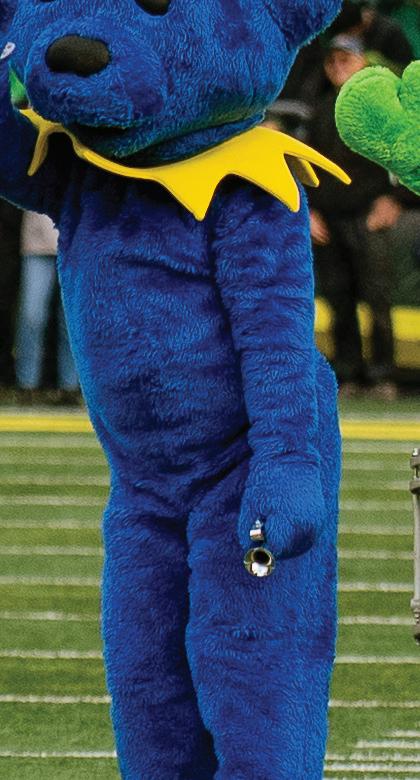

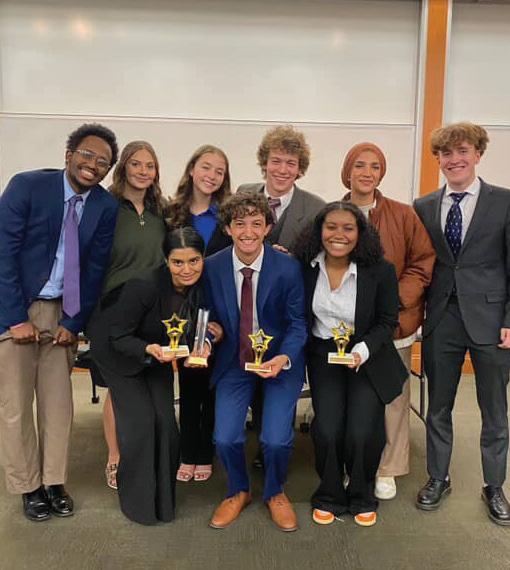




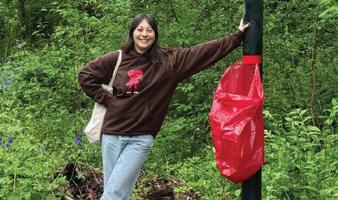

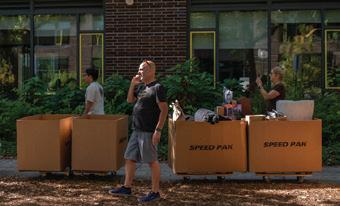


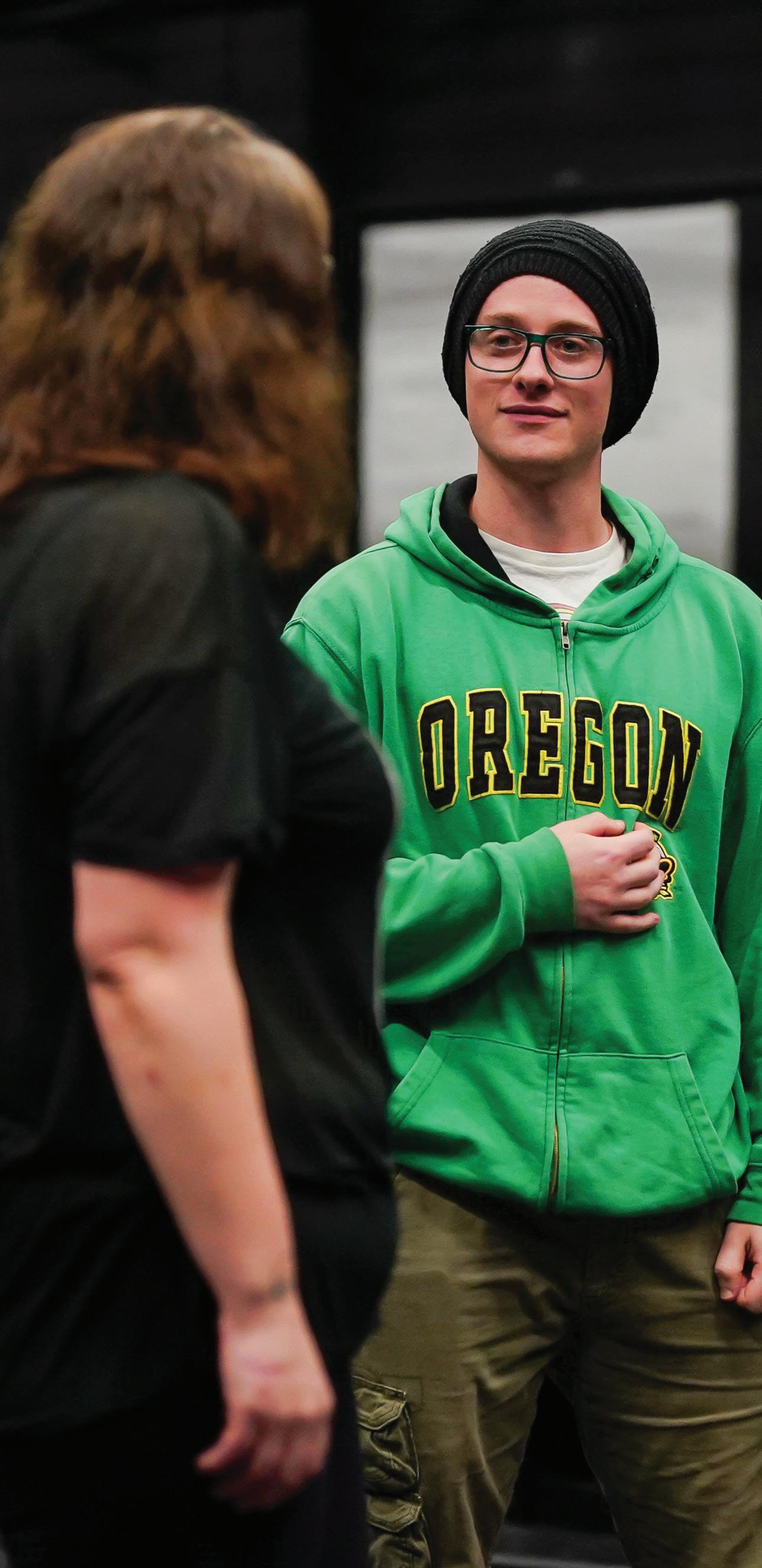
A Greek tale with a twist brings actors’ experiences and voices at Lane Community College’s Blue Door Theatre.
By Seira Kitagawa Arts and Culture Writer
Broadway’s “Hadestown” is only one way of telling the story of Eurydice and Orpheus. Students from Lane Community College are about to present “Eurydice,” a play written by Sarah Ruhl, based on the well-known tale.
Claire Valentine, a student and assistant to the director for the production, said the play has a slightly modern take on the setting with a focus on Eurydice — unlike the well-known tale of Orpheus and Eurydice’s myth, such as in the Broadway show “Hadestown,” where the story focuses on Orpheus.
It is a story about remembrance, forgetting and what it truly means to let go.
“I relate to her a lot in my real life,” Sarah Nesslin, a student who plays Eurydice, said. “I relate to her a lot when it comes to reading and love of books, and for wanting to understand people.”
“It talks about Eurydice’s perspective on getting married to Orpheus and what she goes through that causes death, and what happens to her in the underworld,” Valentine said. The underworld in Greek mythology is where people go
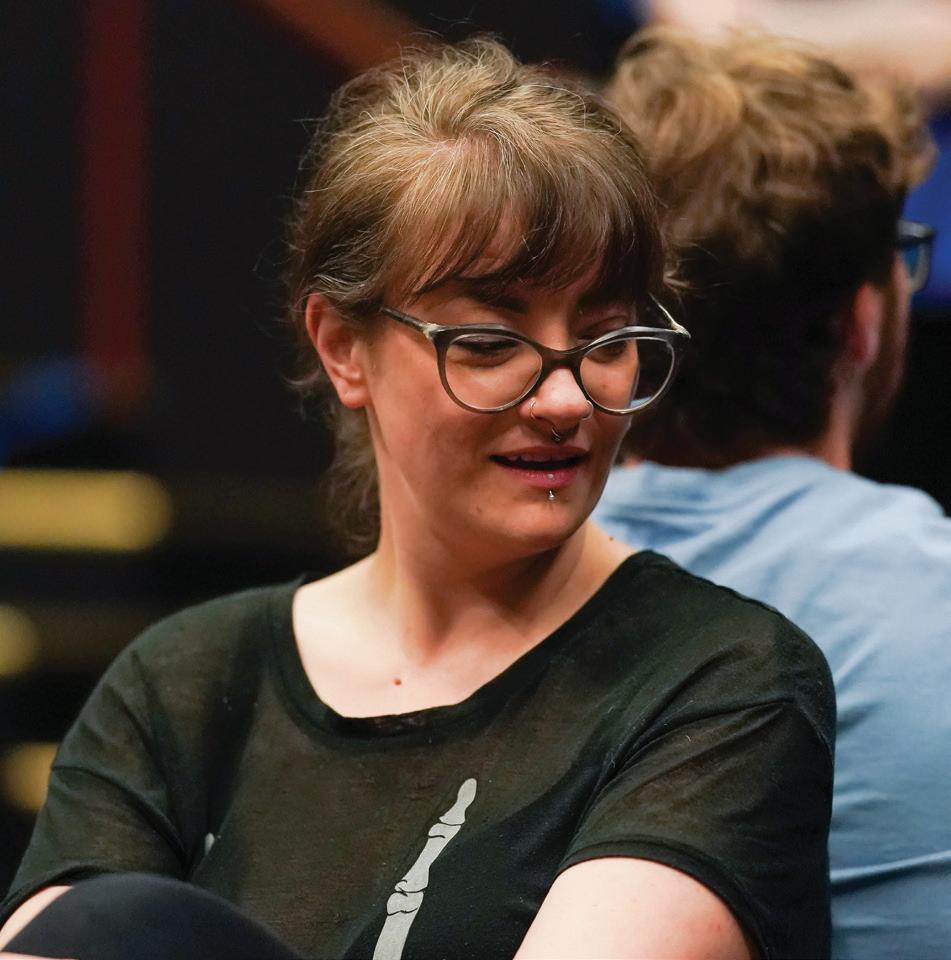
when they die, and in this play, it is captured as more of an abstract wonderland.
Sven Kjellander had never played a role in a production, not counting his kindergarten play. He took an improv class and decided to join the production at LCC.
He plays the role of Lord of the Underworld, who has two versions of characters throughout the show, one being a man and the other being a child. “Part of it is the joy and fun of expressing emotions, challenging myself with my social anxiety,” he said.
Kjellander described his character as someone with a hot temper who gets into more sentimental scenes and brings chaos, serving as “comic relief” in the show.
Some of the students are part of the 2+1 program, where students can study theatre in three years, including two years at LCC and one year at the University of Wales Trinity Saint David, while others are jumping into theater for the first time.
“I love the community college setting because it’s a college setting that invites students from a whole wide range of life experiences,” Eric Braman, the director of the play, said. Whether the students are fresh out of high school and coming into their higher education careers, or are returning to education for any number of years and reasons, they all work together for the production.
Braman has a rich background in education and student support, incorporating his experiences and knowledge in theatre.
Braman said it is important for the student actors “to get on stage and to perform and to use your life experience to inform a character and create something realistic. It’s a life skill that a lot of these folks are working on.”
“Eurydice” will be performed at Blue Door Theatre at the Lane Community College campus at 7:30 p.m. from Thursday, Nov. 20, through Saturday, Nov. 22, and 2 p.m. on Sunday, Nov. 22. Admission is free.
he Outdoor Program’s six-week bike repair and maintenance course for underrepresented students is aimed at fostering confidence and companionship.
By Gigi Roddick Arts & Culture Writer
On Tuesday evenings this term, students gather in the Bike Program office at the EMU to teach, learn and build community through the Femme, Trans, Woman-Identifying and Non-Binary Bike School. The FTWNB Bike School, which is also offered in an open enrollment section, is a six week course hosted by UO’s Outdoor Program. Students learn how to fix flat tires, align wheels and adjust brakes, among other skills. The sequential and comprehensive introduction to bike
repair and maintenance can benefit beginner recreational riders, commuters and even seasoned bike riders.
For many active participants, Bike School is about much more than just technical training — it’s about connection and acceptance.
“It’s really special to be a part of such a vibrant community,” Maya Ostroff, a senior at UO, said.
Ostroff, who started working with the Outdoor Program over two years ago, helps lead FTWNB Bike School.
“Being a part of the OP, and eventually working here, was a really big way for me to find my place on campus. Now, it’s really special for me to be able to facilitate that environment for other people,” Ostroff said.
A welcoming environment is prioritized at the bike school due to the often intimidating and male-dominated nature of outdoor spaces. When Ostroff started learning about bike repairs, it was predominantly from men.
“It’s already a lot to be the person who doesn’t know, and then to have those kinds of social power dynamics and history… it’s pretty weighty. I remember feeling really out of place,” Ostroff said. “It’s really important
to me to make sure that other people don’t feel that way. I want people to come in here and, no matter who you are, see people who look like you and feel like you’re a part of this.”
Sophomore participant Nicole Tran said the program has succeeded in providing a “very nurturing environment” to both learn and create community in.
“You learn so much from it, but also you get connected with people,” Tran said. “The social aspect of it is what I really have come to enjoy.”
For students who identify with underrepresented groups, the OP also offers scholarships through the Redefining Outdoorsy initiative to increase outdoor accessibility for everyone.
“We are very aware at the OP that the financial barrier to outdoor recreation-type things is huge,” said Ostroff. “(It) is really special that we are able to (help) people who might have those financial barriers be a part of this too.”




Emma Kahl is an opinion columnist for The Daily Emerald. She is currently a senior, majoring in written journalism and minoring in global studies. Her writing focuses on social commentary, culture and politics.
Opinion: More students should be protesting because democracy doesn’t work unless we actively participate in it.
By Emma Kahl Opinion Columnist
With a family engaged in activism, I’ve known the power of protesting since childhood. From making signs for my mom to bring to a 2016 women’s march, introducing friends to their first protest after the overturning of Roe v. Wade or standing up against armed neo-Nazis with riot police lining up around the crowd at a 2020 Black Lives Matter Protest, I’ve experienced a range of different protests.
One thing that remains the same at these protests is the energy of change. People who protest are showing up to express their frustration, but also their support, hope and solidarity in an effort to create actionable change.

I recently attended the No Kings 2 Protest in Eugene, where I noticed the majority of people present seemed to be middle-aged and elderly. With a limited Gen-Z presence, I realized that in an era of political polarization, it’s essential for students to show up for what they believe in.
Around 10,000 people attended the June 14 No Kings protest. By the time the No Kings 2 Protest rolled around on Oct. 18, there was “a crowd of approximately 4,000 protesters.” This sharp decline speaks to the decrease in local momentum and the importance of student participation in sustaining a movement of change.
It is vital for intergenerational representation to ensure all perspectives are heard.
Ky Fireside is an organizer and one of the founders of Eyes Off Eugene, a local advocacy group opposing mass surveillance. The organization has held Anti-Flock protests in response to Eugene’s installation of the Flock Safety system.
Fireside explained how student participation has increased as awareness of their cause has spread, but they’ve seen this increase across the whole community. Fireside said they’ve noticed time constraints are a huge barrier for students in getting out to protest.
“Frankly, it’s incredible that any student is able to find time for activism,” Fireside said.
“Students have been great about involving their social circles, and when we’re trying to enact change, our power is in our numbers. These institutions know that it’s not just a couple people speaking out; it’s an entire diverse community demanding accountability,” Fireside said, after discussing the impact their organization has made with increasing local participation.
Our presence matters not just for numbers but also to bring further inclusivity, creativity and action into activism.
The United Nations Children’s Fund said, “Mass protests where young people are on the front lines are more likely to be effective and to achieve positive outcomes in their aftermath.”
Professor Nathalie Hester, who teaches about student movements in her courses on French and Italian culture, said France has a long, well-organized tradition of student protests. She noted that universities have been “privileged spaces to express one’s views.”
“The university has to be a space where students can practice their civic engagement,” Hester said. “If not here, then where? Especially right now, given the attacks on academic freedom.” She noted that fewer students are protesting today likely because of the vulnerability and risk that come with protesting, as well as burnout from advocating for a multitude of global issues.
The American Bar Association shares an important reminder of the nature of protest being linked to the principles of democracy. They wrote, “While the First Amendment’s solution of meaningful dialogue may be uncomfortable, it has the potential to advance the interests of both the protesters and their detractors.”
“America does not assume that every protester is correct. Instead, it recognizes protests warn of areas where meaningful dialogue is absent. When the country heeds this warning, the resulting dialogue has the power to strengthen the union and change the course of history.”
Students may learn about the history of creating change through protest in classes, but can also actively participate by joining in on collective action. Protest is a force for change, but only if we are showing up and using that right.
plans or entering individual CRNs to view classes.
The change has been resoundingly unpopular.
“As a freshman coming into UO, I want scheduling to be nice and simple,” Marika Krempasky, an environmental design major, said. “However with this new system, navigating the website is entirely different and confusing. It makes something as simple as scheduling my classes ten times harder.”
Upperclassmen have found the switch irksome as well. “As a junior, changing up the systems of our class schedule creates an additional system that I have to memorize,” Celeste Mendoza, a psychology and criminology major, said. “It’s just inconvenient.”
As a seasoned veteran of hectic registration weeks myself, I can attest that the existing system was perfectly functional. While schedule builder wasn’t state of the art or glamorous, it fulfilled its purpose – funnelling students into lecture halls with as few complications as possible.
The new registration menu may seem inconsequential, but it is a manifestation of a larger issue. Our campus is currently embroiled in a period of rapid change, struggling to keep up with the push toward modernization and its ever-growing student population.
Far too often, UO implements modernizing or cost-cutting changes at the expense of student experience. Whether it’s cutting language course offerings, slashing RA benefits or even imposing the financially risky raffle system for student football tickets, unwanted alterations are chipping away at the perks that justify the high cost of tuition.
It is natural for the university’s provided services to evolve over time. The issue is not that things are changing – it’s that they are changing for the worse.
Students are rarely consulted, causing further friction between the student body and the administration. When they are, their input seems not to impact the university’s final decision.
During last year’s Student Workers Union strike, for example, student workers expressed substantial concerns about the restructuring of the RA position, which would reduce the role’s compensation from 100% coverage of room and board to as little as 65%. These concerns went unheeded, as administrators have confirmed that next year, these changes to the RA position will go into effect. Therefore, it comes as no surprise that administrators have also failed to consult students about the changes to the registration process, a small but crucial step in students’ academic journey. While
this is a seemingly minor detail in comparison to workers’ compensation or entire majors being upended, it encapsulates a broader dynamic in which students feel that their voices are not heard.
Many of these downgrades are here to stay, as administrators say UO’s dire financial straits are forcing their hand. For the registration portal, the solution is thankfully more straightforward. With luck, the old system will be restored before next term and the overwhelming message will be heard loud and clear: if it ain’t broke, don’t fix it!


Maddox Brewer Knight is an opinion columnist at The Daily Emerald. She is a thirdyear CHC student pursuing a double major in English and Spanish. As a lifelong Oregonian, Maddox cares deeply about confronting social issues both within UO and in the greater community to make our home region a better environment for all.
46

Fiso, Oregon backcourt depth steps up in Mevius’ absence

Inside ‘Duck Force One,’ the tailgate bus that has carried friends to Oregon games for over a decade
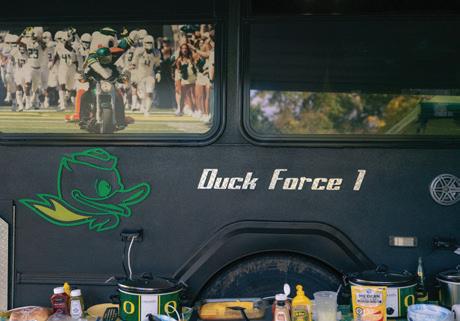
The Ducks stumbled in their first ACHA series against Colorado State University, but recovered by scoring 18 goals across two wins over Oakland.
By Henry Light Sports Writer
The 2025-26 Oregon club hockey team vaulted into the program’s record books in its first win of the season on Oct. 31, setting a new record for goals scored against a Division 1 opponent in a 10-2 win over Oakland University.
It was a difficult road to that milestone for the Ducks, as they dropped three of their four non-ACHA games against teams traveling down from Canada to open the season, before being swept by Colorado State University in their first ACHA series in Fort Collins. The wins and increased contributions from the nine freshmen on the roster finally gave the Ducks a foundation to build from.
Oregon looked disorganized in the four nonACHA games as the freshmen adapted to college hockey and learned third-year head coach Jack Hyman’s systems. The freshmen filled the scoresheet against the Logan Lake Miners in the last of the four games, as center Jackson Ebbott scored twice and defenseman Austin Kluksdahl recorded an assist, but two complete defensive breakdowns in the final five minutes allowed the Miners to split the series with a 5-3 win.
Oregon regathered some momentum in the front end of the doubleheader against the Rams when sophomore Dylan Chapman, who sits third on the team with six points through four games, opened the scoring. Chapman picked up a rebound off a defender in the high slot and ripped it into the top right corner to give the Ducks a lead 11:22 into the second period.
The Ducks were fortunate to find the opener after being outshot 25-8 in the first period, but with 2:20 remaining in the second, the Rams finally beat freshman goalie Thomas Cafarelli. Despite a heroic 44-save effort from Cafarelli, the Rams scored twice in the third period to secure a 3-1 win.
In game two, Oregon’s skaters once again asked too much of its goaltender, with sophomore George Serbin stopping 47 of the 51 shots he faced. This time, there was no early momentum on their side as Colorado State scored the first three goals in a 4-1 win.
The one bright spot for the Ducks outside the crease was freshman Inde Abresch, who scored his first career goal off an assist from senior Jackson Henningsgard. Early in the second period, Henningsgard tapped a loose puck out of the left corner to Abresch, who received the pass and dragged the puck toward the goal, completely changing the angle of the shot before burying it in the top left corner.
Abresch and Henningsgard have played on the same line to start the season, and it has paid off for the Ducks as the right wing and center are tied for the team lead with seven points.

Oregon trailed 1-0 after the first period, despite outshooting Oakland 15-4. Henningsgard tied the game 57 seconds into the second period, but it took another 10 minutes for the Ducks to fully break through. By the end of the second, Oregon held a 5-2 lead and was outshooting the Golden Grizzlies 46-7. By the end of the 10-2 win, the Ducks outshot Oakland 80-9.
The Ducks started relatively slow once again in game two, leading 1-0 after the first period, courtesy of another Henningsgard goal. Oregon soon took over again, eventually taking an 8-1 win and outshooting the Golden Grizzlies 71-11.
Freshmen Colin Gabriel and Zachary Orwig both broke through in Rochester, with Gabriel scoring his first three career goals and Orwig scoring his first two. Oregon also got more out of its seven-player sophomore class. Noah Easterson led with five points, while Alex Ulyanov and Axel Wyatt both recorded three.
Oregon will carry the momentum into two home games against Division 2 Washington on Nov. 14 and 15, before returning to Division 1 play the following weekend at the ACHA Chicago Classic in Romeoville, Illinois.
SATURDAY
Nov. 20, 2025
Oregon vs. Michigan
The Ducks shone at East Lake before their winter break — and set themselves up well in the national picture.
By Harry Leader Sports Writer
The Oregon women’s golf team wrapped up its fall season with a win at the East Lake Championship in Atlanta on Oct. 29. The win marked Oregon’s first team win of the season, taking a 4-1 victory over the Northwestern Wildcats.
The all-around team victory puts the Ducks in a strong position to end the fall portion of the season, putting them in the race for title contention early on in the year. The win put the Ducks at No. 3 in the national rankings heading into the break and is head coach Derek Radley’s 12th victory during his tenure at Oregon.
Due to poor weather conditions, all matches at East Lake were moved to very early in the morning with freshman Sophie Han teeing off at 5:20 a.m. She opened the match with a tone-setting win against Ashley Yun, hitting a birdie on the 14th hole that secured the win.
Things evened up for Northwestern after Duck freshman Shyla Singh lost to Dianna Lee in a 5&4 defeat in the second round. Sophomore Tong An struggled through the initial holes in the third round, but a late comeback in the final holes secured a close win to go up 2-1 heading into the fourth round.
Star junior and No. 3-ranked in dividual player in the country Kiara Romero took a late victory against Megan Meng in the final round to seal the tournament win for the Ducks. She never trailed, and was up four shots through the seventh hole.
Sophomore Suvichaya Vini jchaitham dominated in similar fashion, taking down Arianna Lau by one stroke but never trailed against her through the final round.
“Incredibly proud of our team for what they’ve accom plished this week,” Radley said to GoDucks. “The East Lake Cup is one of the most presti gious events in college golf and it really feels like postseason competition when you’re out there on the course.”
A team win at East Lake is a great way to cap off the fall season, and more importantly, gets Oregon where it needs to be if they want to compete for a national championship. The Ducks previously got off to a rocky start, losing to Texas in their first matchup and taking second place against No. 1-ranked Stanford.
“To finish first in stroke play and then put together two wins in match play, including today against the reigning national champions, that’s not easy to do and I’m really impressed with the way our ladies carried themselves throughout the tournament,” Radley said.
Oregon has over two months off before its next matchup, which will be the Therese Hession Regional Challenge in Palos Verdes, California. The tournament will host 16 teams from all over the county including Big Ten teams like UCLA, USC and Ohio State.
If the Ducks can carry this momentum into the spring, they could easily cement themselves as national championship contenders. A run could start with a win against the Trojans (currently No. 2 in the national rankings after a successful fall season) at the Therese Hession Regional — or it at least would be a major step in the right direction.

